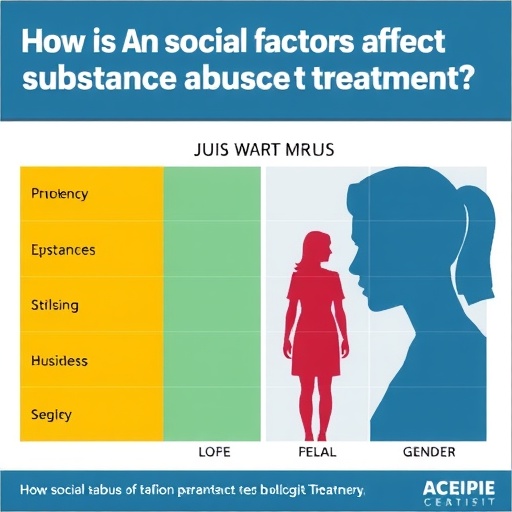Report on the Role of Artificial Intelligence in Advancing Sustainable Development Goals within the Healthcare Sector
Executive Summary
This report examines the application of Artificial Intelligence (AI) in the healthcare industry, focusing on its capacity to balance the dual objectives of enhancing care quality and ensuring financial viability. The analysis is framed within the context of the United Nations Sustainable Development Goals (SDGs), illustrating how AI-driven innovations contribute directly to global sustainability targets, particularly SDG 3 (Good Health and Well-being), SDG 8 (Decent Work and Economic Growth), and SDG 9 (Industry, Innovation, and Infrastructure).
Contribution to SDG 3: Good Health and Well-being
AI technologies are pivotal in advancing SDG 3 by directly improving health outcomes and making healthcare systems more efficient and accessible. The integration of AI enhances the quality of patient care while optimizing operational workflows.
- Enhanced Patient Experiences: AI algorithms analyze patient data to predict health risks, personalize treatment plans, and streamline the patient journey, leading to better health outcomes and higher satisfaction.
- Improved Diagnostic Accuracy: Machine learning models assist clinicians in interpreting medical images and data, reducing diagnostic errors and enabling earlier intervention.
- Operational Efficiency: AI automates administrative tasks, allowing healthcare professionals to focus on direct patient care, thereby improving the overall quality and responsiveness of health services.
Impact on SDG 8: Decent Work and Economic Growth
The financial sustainability of healthcare systems is a cornerstone of economic stability and a prerequisite for providing decent work. AI-powered analytics optimize the revenue cycle, ensuring that healthcare organizations can operate efficiently and sustainably.
Key Areas of Financial Optimization:
- Revenue Cycle Management: AI automates billing and coding processes, reduces claim denials through predictive analytics, and streamlines payment collections, securing the financial health of providers.
- Resource Allocation: AI tools help manage hospital resources, such as bed occupancy, staff scheduling, and supply chain logistics, minimizing waste and reducing operational costs.
- Sustainable Economic Models: By ensuring financial stability, AI enables healthcare institutions to invest in facilities, technology, and staff, contributing to economic growth and the creation of stable employment.
Fostering SDG 9: Industry, Innovation, and Infrastructure
The implementation of AI represents a significant leap in healthcare innovation and the development of resilient digital infrastructure, a core target of SDG 9. This technological advancement is dependent on robust and interconnected systems.
- Artificial Intelligence Analytics: The use of advanced analytics provides deep insights into clinical and operational data, driving evidence-based decision-making and continuous improvement.
- Interoperability: A critical component for AI success is interoperability—the ability of different IT systems and software applications to communicate and exchange data. This creates a cohesive digital health ecosystem essential for modern, resilient healthcare infrastructure.
- Fostering Innovation: AI serves as a platform for further innovation, enabling the development of new diagnostic tools, therapeutic approaches, and models of care that are more effective and sustainable.
Analysis of Sustainable Development Goals in the Article
-
Which SDGs are addressed or connected to the issues highlighted in the article?
The article’s content, primarily found in its title and metadata, connects to the following Sustainable Development Goals:
- SDG 3: Good Health and Well-being: The article’s central theme is improving healthcare. Phrases like “balances care quality,” “enhance patient experiences,” and the general context of “Healthcare IT” directly relate to the goal of ensuring healthy lives and promoting well-being.
- SDG 9: Industry, Innovation, and Infrastructure: The article explicitly mentions “Artificial Intelligence Analytics,” “Artificial Intelligence,” and “Interoperability.” This highlights the role of technological innovation and modern infrastructure (IT systems) in advancing the healthcare industry, which is a core component of SDG 9.
- SDG 8: Decent Work and Economic Growth: The focus on “financial health” and “optimizing your revenue cycle” points to improving the economic productivity and sustainability of the healthcare sector. A financially stable healthcare system is crucial for sustained economic growth and can support stable employment.
-
What specific targets under those SDGs can be identified based on the article’s content?
Based on the issues discussed, the following specific SDG targets can be identified:
- Target 3.8: “Achieve universal health coverage, including financial risk protection, access to quality essential health-care services and access to safe, effective, quality and affordable essential medicines and vaccines for all.” The article’s emphasis on using AI to enhance “care quality” and “patient experiences” directly supports the objective of providing access to quality essential healthcare services.
- Target 9.5: “Enhance scientific research, upgrade the technological capabilities of industrial sectors in all countries… encouraging innovation.” The article’s discussion of applying “Artificial Intelligence” and achieving “Interoperability” in healthcare is a clear example of upgrading the technological capabilities of a key industrial sector to foster innovation and improve service delivery.
- Target 8.2: “Achieve higher levels of economic productivity through diversification, technological upgrading and innovation…” By focusing on how AI can optimize the “revenue cycle” and ensure the “financial health” of healthcare providers, the article addresses the goal of improving economic productivity through technological upgrading within the healthcare sector.
-
Are there any indicators mentioned or implied in the article that can be used to measure progress towards the identified targets?
The article does not mention explicit statistical indicators, but it implies several metrics that could be used to measure progress:
- For Target 3.8: The article implies indicators related to the quality and efficiency of health services.
- Implied Indicator: Patient satisfaction scores or other metrics for “patient experiences.”
- Implied Indicator: Measures of “care quality,” such as patient outcome data, reduction in medical errors, or adherence to clinical guidelines.
- For Target 9.5: Progress can be measured by the adoption and integration of new technologies in the healthcare sector.
- Implied Indicator: The rate of adoption of AI-based solutions within healthcare systems.
- Implied Indicator: Level of investment in healthcare IT infrastructure that supports “Interoperability.”
- For Target 8.2: The article points to financial and operational efficiency metrics.
- Implied Indicator: Key performance indicators for revenue cycle management (e.g., claim denial rates, days in accounts receivable).
- Implied Indicator: Measures of the “financial health” of healthcare organizations, such as operating margins and long-term sustainability.
- For Target 3.8: The article implies indicators related to the quality and efficiency of health services.
Summary of Findings
| SDGs | Targets | Indicators |
|---|---|---|
| SDG 3: Good Health and Well-being | Target 3.8: Achieve universal health coverage and access to quality essential health-care services. |
|
| SDG 9: Industry, Innovation, and Infrastructure | Target 9.5: Enhance research and upgrade the technological capabilities of industrial sectors. |
|
| SDG 8: Decent Work and Economic Growth | Target 8.2: Achieve higher levels of economic productivity through technological upgrading and innovation. |
|
Source: healthcareitnews.com






